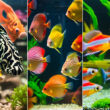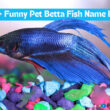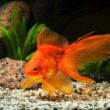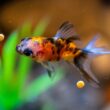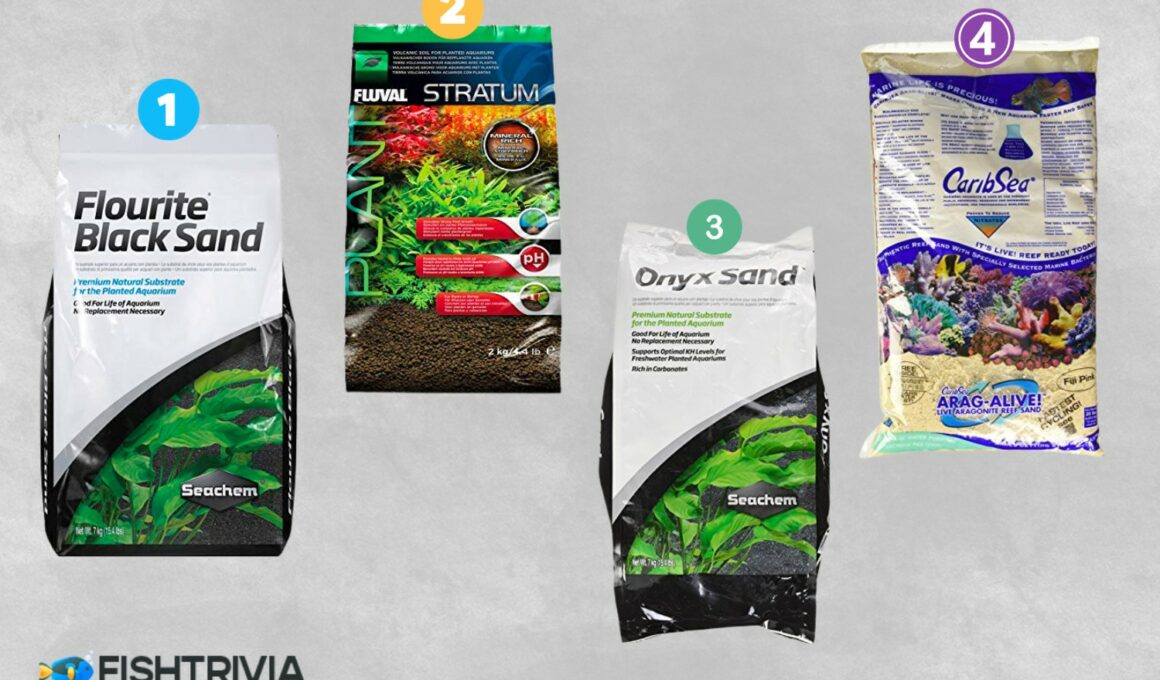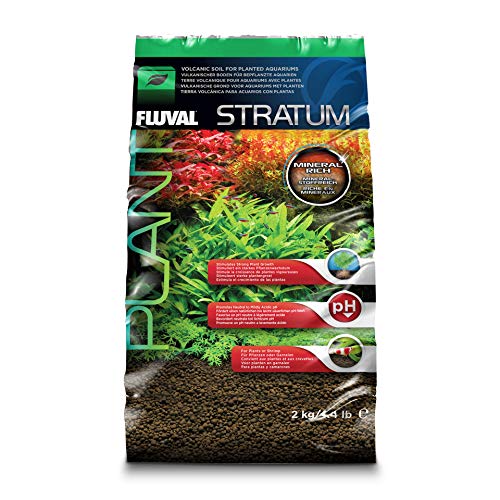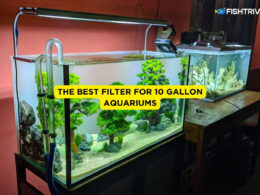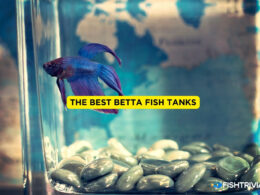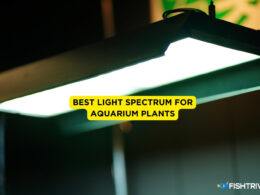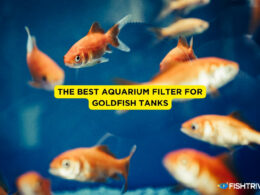In this article Show
The foundation of any successfully planted aquarium lies in its substrate. It’s more than just a base; it’s a crucial component that supports plant growth, influences water chemistry, and contributes to the overall health of your aquatic ecosystem. With various substrates available, ranging from gravel and sand to specialized soil blends, making the right choice can significantly impact the well-being of your tank inhabitants. We recommend The Flourite Seachem Black Sand as the best substrate money can buy for planted fish tanks for several reasons; after testing, it came out on top in terms of quality, price-wise, and how the fishes in the aquarium responded to it; take a look at some of our other recommendations below;
Best Substrates For Planted Fish Tanks
In this article, we’ll explore the different types of substrates suitable for planted tanks, their specific benefits, and how they cater to the needs of your aquatic plants and fish. Whether you are setting up a new tank or looking to enhance an existing one, this guide provides practical insights and expert tips to help you make an informed decision.
Also worth reading;
- How To Grow Hornwort Aquarium Plant: Care Guide
- How to Plant Water Lily Bulbs in an Aquarium
- How To Clean Algae off Live Aquarium Plants: Step-by-Step Guide
- 7 Reasons Why Your Aquarium Plants Are Dying: Always Check These
Types of Substrates for Planted Tanks
Selecting the right substrate for your planted tank is a critical decision influencing your aquarium’s overall health and aesthetics. Here, we’ll discuss the pros and cons of four popular substrates: gravel, sand, soil-based substrates, and commercial substrates.
This will help you weigh your options and choose the one that best suits your aquarium’s needs.
1. Gravel Substrate
Pros
- Gravel is widely available in various sizes and colors, offering great aesthetic flexibility.
- It allows water to flow through it easily, which helps in preventing the buildup of harmful gases and facilitates beneficial bacterial growth.
- Gravel is easy to clean and maintain, making it a practical choice for beginners.
Cons
- It may not be the best choice for plants requiring a nutrient-rich substrate, as gravel lacks inherent nutrients.
- Smaller gravel pieces can compact over time, potentially harming root growth.
2. Sand Substrate
Pros
- Sand provides a natural look and is excellent for certain types of plants and fish, especially those that like to burrow.
- It can prevent debris from sinking too deep, making cleaning relatively easy.
Cons
- Sand can compact over time, reducing water flow and oxygenation to the roots.
- It requires careful cleaning to avoid clouding the water and can trap wastes more easily than gravel.
3. Soil-Based Substrates
Pros
- These substrates are rich in nutrients essential for plant growth and health.
- Soil-based substrates can create an ideal environment for root development and beneficial microorganisms.
Cons
- They may initially cloud the water and require a settling period.
- Over time, the nutrients can deplete, requiring supplementation or replacement.
4. Commercial Substrates
Pros
- Specifically formulated for planted tanks, these substrates often contain all the necessary nutrients for optimal plant growth.
- They often come pre-washed and are easy to use, saving time and effort in preparation.
Cons
- Commercial substrates can be more expensive than other options.
- Some may alter the water chemistry, like pH levels, which you must monitor closely.
Each substrate type has its unique advantages and challenges. The right choice depends on your specific tank conditions, plant species, and aesthetic preferences. Understanding these pros and cons will guide you in creating a flourishing and visually appealing planted aquarium.
Top Substrates For Planted Aquariums
Here are the best substrates for planted aquariums today;
1. Flourite Seachem Black Sand
Seachem Fluorite is a popular substrate for planted tanks. This fluorite is unique in that it is made of conductive clay, unlike most substrates. The benefits of a clay-based substrate include significantly higher iron levels than other substrates discussed in this article.
This substrate is not chemically treated and does not affect the pH, ensuring a safe environment for your planted aquaria to thrive. This Seachem product, made of high-quality natural sand, is best for planted aquariums but can also be used in a freshwater tank.
Fluorite substrate is nutrient-rich aqua soil laid at the tank’s bottom to root the plants. We recommend cleaning it before adding it to your planted aquarium to remove the discoloration in the water. It also makes the aquarium more comfortable for the fish.
Main Features
- Quality will last.
- Clay gravel with pores.
- It does not affect the chemistry of water.
- This substrate is made of organic materials.
- It contains a lot of essential nutrients.
2. UP AQUA Sand for Aquatic Plants
You can avoid this problem by using the UP Aqua Sand Substrate. Because it does not discolor the tank’s water, you can use it directly in your tank without washing it. This is ideal for many aquarium plants because it provides a suitable root substrate.
It is dense enough to keep roots in place but has enough space between grains to allow roots to spread out and absorb nutrients properly.
The substrate reduces the pH to a range of 6.5 to 7.0, completely neutral or slightly acidic. This pH range is ideal for various fish and aquatic plants.
There will be no water clouding after the tank has been filled. It is truly unique how clear the water will be right after filling the tank. Because the nutrient-rich nature of this substrate has resulted in healthier plants, you can see good root development.
Another significant advantage is that this material does not need to be cleaned before use, which is not true of most other sand-based substrates.
Main Features
- Longevity is excellent.
- Lightweight and conductive.
- It is a good source of nutrients.
- Lowers the pH of the tank.
- Because it does not leak ammonia, your tank water remains crystal clear.
- Without rinsing, it can be used directly in the aquarium.
3. Fluval Stratum Plant Substrate For Fish Tanks
This substrate is ideal for you if you have an aquarium for plants, betta fish, and shrimp. This product is made from organic volcanic soil that is naturally mineral-rich. Volcanic soil contains many unique components that set it apart from other soil types.
This aquarium substrate for live plants ensures the natural growth of aquatic plants by allowing the roots of the plants to spread deeply into them and absorb nutrients efficiently.
Fluval Stratum is ideal for freshwater shrimp tanks because it encourages algae and other tasty bits. As a result, shrimp will spend their days picking off these algae, and they appear to prefer it over other substrates. Another exciting feature is that its unique blend naturally lowers the pH of your tank to optimal levels.
These qualities facilitate the growth and development of nitrifying bacteria in the tank. These bacteria will aid in keeping the water’s health and cleanliness at peak levels.
Main Features
- Soil rich in minerals from volcanic activity.
- Plant growth and root development are greatly helped.
- Lightweight and porous.
- The pH ranges from neutral to slightly acidic.
- Promotes a pH range of neutral to mildly acidic.
- It is appropriate for live plants or shrimp.
4. Carib Sea Aquatics Eco-Complete Sand
CaribSea’s live sand is designed explicitly for cichlid and betta tanks. It maintains the high pH that African cichlids require. Nature’s Oceans African Cichlid Substrate is a mixture of black and white grains ranging from 6 to 8 mm.
The one-of-a-kind composition captures the African Rift Lake environment. It automatically buffers the aquarium’s life and adds calcium, magnesium, carbonate, and other nutrients! The high internal porosity of Eco-Complete maximizes physical capacity, keeping your fish healthier.
It is an entirely natural product surrounded by a biofilm containing live bacteria that initiates the cycling process and removes nitrogenous wastes to provide a stable tank.
It contains live heterotrophic and autotrophic bacteria to maintain an appropriate organic/inorganic balance. The heterotrophs break down organic waste material to produce inorganic ammonia.
Main Features
- Complete in terms of mineralogy and biology.
- Eco-Complete.
- Maintains the health of your fish.
- Biofouling is avoided.
- It eliminates nitrogenous waste.
- Aids in water filtration.
5. Aqua Natural Diamond Black Premium Gravel and Substrate
Aqua Mr. Aquarium On our list, the soil is the least common substrate for planted aquariums, but it should not be overlooked. It contains a proprietary blend of organic and inert ingredients that provide all of the elements required for healthy plant growth.
The substrate is lightweight and porous. This feature creates an environment that encourages healthy bacteria, which are especially necessary for the tank’s environment.
Mr. Aqua’s substrate is popular because it lowers the pH of the water, requiring less treatment. This is the substrate for your tank if you have fish that prefer a more acidic environment.
This is beneficial to both your fish and your plants. This is an excellent bottom layer for plants to establish their roots because it contains a wealth of nutrients.
Main Features
- Full of vitamins and minerals.
- Lowers the pH.
- The goal is to encourage root development.
- It’s ideal if you have a Betta or a Dwarf Shrimp.
- This product has an excellent overall lifetime of 12-18 months.
6. Seachem Fluorite Onyx Sand Substrate
It is best suited for planted aquarium tanks but can be used in any aquarium setup. This substrate works best as a stand-alone integral bed. The aquarium substrate is abundantly carbonate-rich, primarily beneficial to bicarbonate plants.
This is deep black sand that has been enriched to aid plant growth and reduce the need for fertilizers. It has good water penetration for bacterial colonization and plant growth. It may be preferable if you require chemical assistance with pH or kH.
Onyx Sand works best when used alone as an integral substrate bed but can also be combined with other gravels. Laterite and other gravel modifiers are not required. We recommend washing it in mesh before adding it to the tank for the best results.
Main Features
- The black coloration is stunning.
- It includes plant nutrients.
- Dense enough to keep your plant down.
- This is suitable for all creatures.
- There is no toxic effect.
7. CaribSea Arag-Alive 20-Pound Fiji Pink Sand
CaribSea’s Fiji pink sand has a small grain size and helps to simulate a marine environment for your fish. This sand contains many beneficial bacteria to keep your fish and plants healthy and help in biological filtration.
Mineralogically, this sand contains many calcium and carbonates, essential for coral growth. This, combined with its biological filtration properties, makes it ideal for use in saltwater reef tanks.
Carib sea Arag Fiji pink sand has a grain size of approximately 0.5 mm to 1.5 mm, resulting in high porosity and low resistance to burrowing, injectability, and enhanced diffusive flux properties.
This substrate contributes to an increase in pH to around 8.2, which may harm fish that prefer more neutral waters. This sand is designed to be cycled in your tank, helping reduce waste and keeping your fish and plants safe and sanitary.
Main Features
- Enhances the appearance of fish tanks.
- Allows for a powerful filtration mechanism.
- Millions of beneficial bacteria will present.
- pH can be stabilized.
- Algae growth is controlled.
- It gives your tank a distinct and eye-catching appearance.
Factors to Consider When Choosing a Substrate
The substrate in a planted aquarium is not just a decorative element; it’s a functional part of the tank’s ecosystem. When choosing a substrate, it’s essential to consider various factors that affect both the health of your plants and fish and the overall maintenance of your aquarium. Here are key considerations:
1. Grain Size and Composition
Grain Size
The size of the substrate grains can have a significant impact on your tank. Larger grains allow more water flow, which can be beneficial for certain types of plants and fish. Finer grains, on the other hand, are better for plants that require a more compact substrate.
Composition
The material of the substrate also matters. Options include inert materials like gravel and sand, or nutrient-rich substrates like aqua soils.
2. Nutrient Content
- A nutrient-rich substrate is vital for plant growth. Some substrates come enriched with minerals and nutrients essential for plant health.
- Consider the types of plants you have in your aquarium; some may need more nutrient-rich substrates than others.
3. pH and Chemical Effects on Water
- Different substrates can alter the pH and chemical balance of your tank’s water. For instance, certain substrates can increase the pH, while others may lower it.
- It’s crucial to choose a substrate that complements the natural pH requirements of your plants and fish.
- Regularly monitoring water parameters is key to maintaining a healthy tank environment.
4. Aesthetic Considerations
- While functionality is important, the visual aspect of the substrate cannot be ignored. It contributes significantly to the overall appearance of your aquarium.
- Consider the color and texture of the substrate and how it complements your plants, fish, and decorations.
- A well-chosen substrate can enhance the beauty of your aquatic landscape.
When selecting a substrate, it’s about finding a balance between these factors to create an environment that is both healthy for your aquatic life and pleasing to the eye. Understanding these considerations will help you make an informed choice that supports the thriving ecosystem of your planted aquarium.
Maintaining Your Substrate
Proper maintenance of your aquarium substrate is key to ensuring a healthy and aesthetically pleasing planted tank. Regular care not only promotes plant growth but also helps in preventing common issues like algae growth and substrate compaction. Here are some essential tips and strategies for effective substrate maintenance.
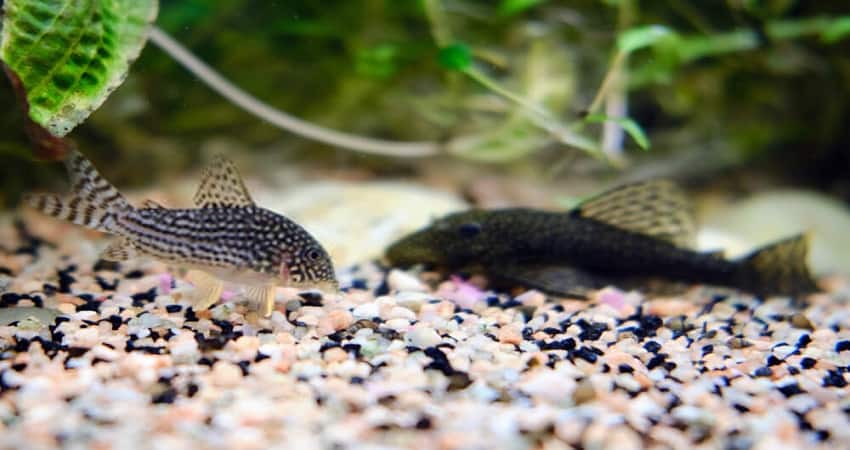
1. Regular Maintenance Tips
- Routine Cleaning: Regularly vacuum the substrate during water changes to remove debris and uneaten food. This prevents the accumulation of harmful substances that can degrade water quality.
- Avoid Overfeeding: Overfeeding your fish can lead to excess food settling into the substrate, contributing to poor water quality and algae growth. Feed your fish in controlled amounts.
- Water Circulation: Ensure good water circulation in the tank. This helps in distributing nutrients to plants and prevents the formation of dead spots where debris can accumulate.
2. Dealing with Algae
- Control Lighting: Algae thrive in high-light conditions. Manage the amount of light your tank receives daily, ideally not exceeding 8-10 hours, to keep algae growth in check.
- Nutrient Balance: Excess nutrients in the water can promote algae growth. Regular water changes and careful fertilization can help maintain a healthy nutrient balance.
- Algae Eaters: Consider introducing algae-eating fish or invertebrates, like certain species of snails or shrimps, which can naturally help control algae levels.
3. Preventing Substrate Compaction
- Adequate Grain Size: Choosing a substrate with the right grain size can prevent compaction. Larger grains allow better water flow, reducing the chances of compaction.
- Occasional Stirring: Gently stirring the substrate, especially in areas with fine grains, can prevent compaction and keep the substrate healthy for plant roots.
- Rooted Plants: Growing plants with robust root systems can naturally help prevent substrate compaction, as their roots grow and spread through the substrate.
Maintaining your substrate is an ongoing process that plays a crucial role in the overall health of your aquarium. By following these tips, you can prevent common issues and ensure that your planted tank remains a vibrant and thriving ecosystem. Remember, a well-maintained substrate is the foundation of a successful and beautiful aquarium.
Frequently Asked Questions
Is sand or gravel better for a planted aquarium?
For most freshwater aquariums, gravel is a better option. They also come in various colors, allowing you to personalize your tank and match it to your fish. Sand does not allow water to flow as freely as gravel does.
How often should you change the aquarium substrate?
You should change the substrate every 18 months or whenever you are in danger of getting into trouble by keeping the PH at a high level.
What kind of filter should I use for a sand aquarium?
Use a pre-filter made of foam or a sponge. A coarse sponge will help prevent sand from entering your filter’s intake while not interfering with the filter’s flow.
How thick should aquarium sand be?
Simplified Reefkeeping author Robert Metelsky recommends a thickness of 1-3/4 to 2 inches, which is about the average depth used in most saltwater aquariums.


